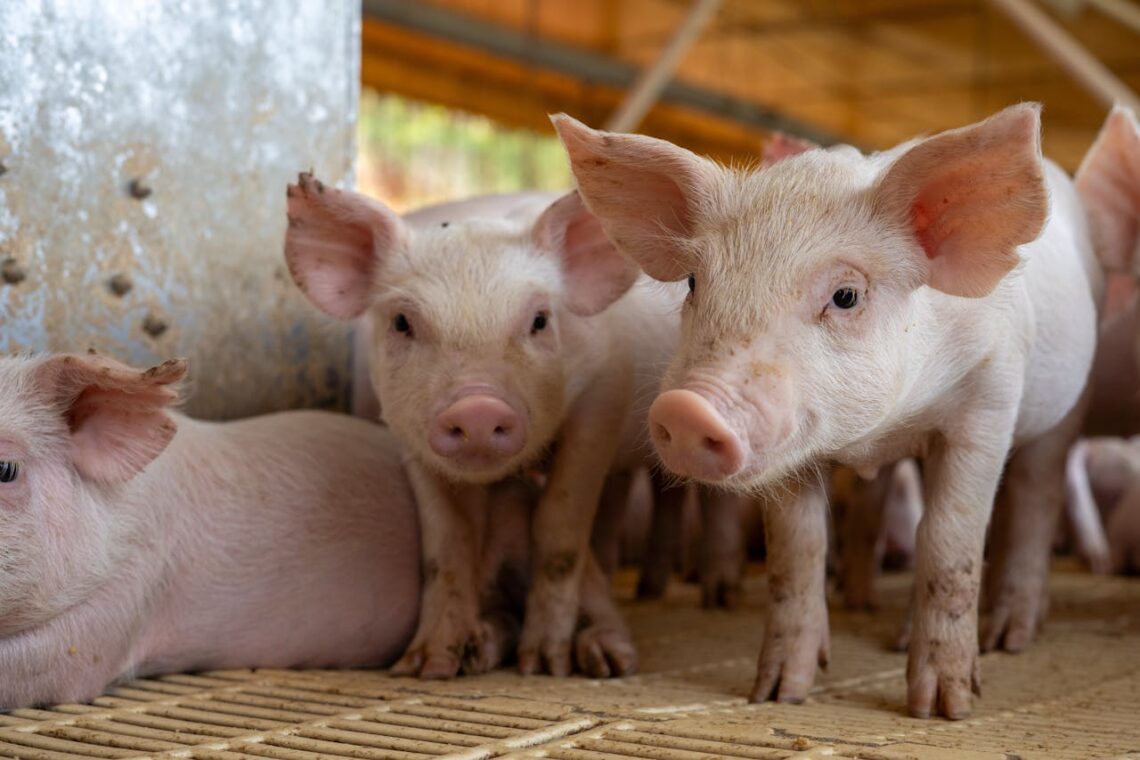
43 Fascinating Facts About Pigs That Will Surprise You
Facts About Pigs
Although pigs are often misunderstood, they are among the most fascinating animals on earth. Surprisingly, many facts about pigs reveal that they are far more intelligent, social, and clean than people assume.
Because of stereotypes portraying them as dirty animals, their true nature is frequently overlooked.
However, as research continues to grow, more evidence proves that pigs deserve appreciation for their unique qualities.
Interestingly, pigs have been part of human culture for thousands of years. From their role in the Chinese zodiac to their connection with explorers like Christopher Columbus and Spanish explorer Hernando de Soto, pigs have left a lasting mark on history.
Moreover, studies such as those published in the International Journal of Comparative Psychology highlight their advanced cognitive abilities and emotional depth.
Therefore, in this article, a wide range of facts about pigs will be shared, covering their biology, behavior, history, and importance to humans.
With empathy for these misunderstood creatures, each section will shed light on truths that might surprise even the most seasoned animal lovers.
The History of Pigs and Human Connection
Pigs in Ancient Civilizations
Throughout history, pigs have played an important role in many societies. When Christopher Columbus sailed to the New World, pigs were among the first animals he introduced, providing an adaptable food source.
Similarly, Hernando de Soto is credited with bringing pigs to the United States, where they spread rapidly and became vital to farming communities.
Pigs in Culture and Symbolism
- Indeed in the Chinese zodiac, pigs symbolize wealth and abundance.
- In literature and folklore, pigs often represent both greed and prosperity.
- In modern celebrations, National Pig Day on March 1 honors the importance of pigs in human life.
Clearly, the relationship between humans and pigs has been intertwined for a long time, influencing traditions, farming practices, and even economies.
Physical Characteristics of Pigs
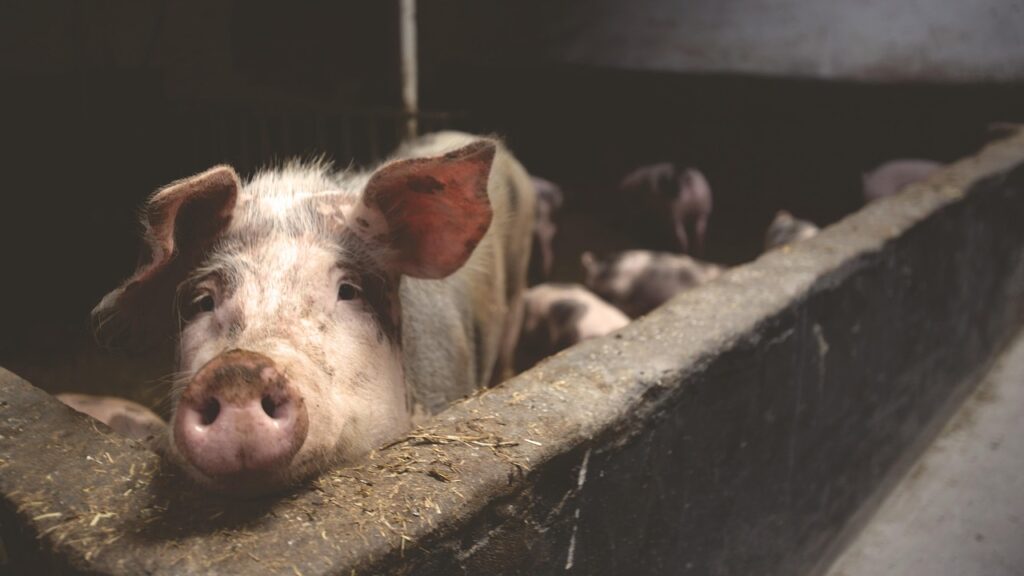
Unique Pig Anatomy
Pigs, or Sus scrofa domesticus, are warm-blooded animals with remarkable features. Their snouts contain a large round disk of cartilage, which gives them an excellent sense of smell.
Although they have poor eyesight, their noses help them navigate and find food across different places.
Sweat Glands and Skin
Contrary to the stereotype of pigs being dirty animals, they are considered among the cleanest animals when provided with enough space.
Because pigs lack efficient sweat glands, they cool themselves by rolling in mud, which also protects their pig’s skin from sunburn and insects.
This behavior has been misunderstood, leading to myths that pigs are naturally filthy.
Body Size and Growth
- Baby pigs (also called newborn piglets) are incredibly small at birth, yet they grow quickly.
- Adult pigs can weigh hundreds of pounds, with some breeds like the Mortgage Lifters becoming exceptionally large.
- The largest pig on record, known as Big Bill, weighed over 2,500 pounds, making it the world’s heaviest pig.
Such surprising facts highlight the diversity of pig breeds and their adaptability across different situations and living spaces.
Intelligence and Emotional Depth
Pigs as Smart Animals
Studies have proven that pigs are among the most intelligent animals on the planet. With cognitive skills similar to dogs, pigs can remember tasks, recognize their own names, and even play video games.
Moreover, experiments have revealed that pigs possess an excellent memory and a good sense of direction, allowing them to navigate great distances.
Emotional and Social Behavior
Because pigs are emotional creatures, they form close bonds with both other pigs and humans. Mothers’ voices are recognized by their new-born piglets, and studies suggest that pigs can identify a mother’s voice from different situations.
Additionally, they communicate through distinct grunts, each tailored to convey meaning in different places.
Consequently, pigs are not only smart animals but also sensitive animals capable of forming strong attachments.
Myths and Misconceptions About Pigs
Are Pigs Really Dirty Animals?
Contrary to popular belief, pigs are not naturally filthy. Instead, their reputation as dirty animals stems from a misunderstanding of their behavior.
Since pigs have limited sweat glands, they rely on mud or water to regulate body temperature. Therefore, wallowing is a survival strategy, not a sign of uncleanliness.
Interestingly, when given enough space, pigs often choose to keep their living area tidy by separating spaces for eating, sleeping, and waste.
Pigs as Clean Animals
- Pigs are ranked among the cleanest animals in agriculture when raised in proper environments.
- Even factory farms demonstrate how pigs attempt to maintain hygiene despite a lack of space.
- In contrast, wild pigs also follow clean habits, choosing shaded areas to rest and mud pools for cooling.
Hence, labeling pigs as naturally dirty overlooks the truth that they are, in fact, clean animals with instinctive self-care behaviors.
Pigs in Farming and Agriculture
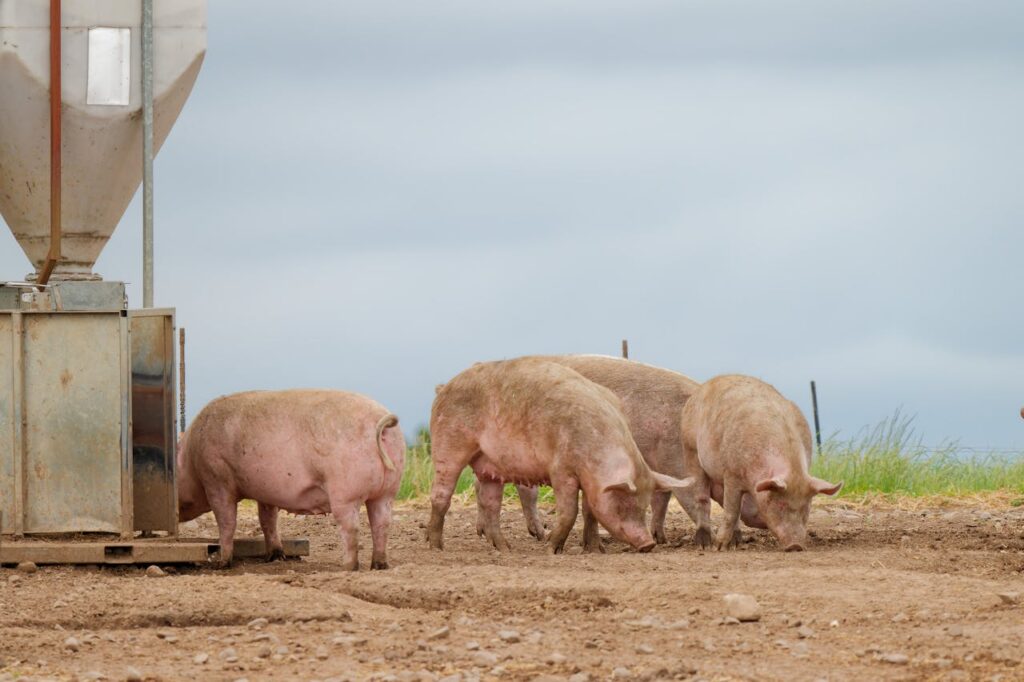
Domestic and Industrial Farming
Because pigs have been domesticated for centuries, they are now a cornerstone of global agriculture. In the United States, both domestic pigs and those on industrial farms supply pork products consumed by millions.
Unfortunately, conditions on factory farms often limit pigs’ living space, leading to stress and the need for procedures such as tail docking.
Nevertheless, pigs have also been bred for unique purposes. For instance, breeds like the Mortgage Lifters were created for their ability to grow quickly and produce large amounts of meat.
Food Products and Economy
- Pigs provide valuable products such as pork, lard, and leather.
- On average, one pig can yield many pounds of bacon, ham, and ribs.
- Even food waste is reduced when pigs are fed scraps, highlighting their role in sustainable farming.
Therefore, pigs continue to play an important role in global food systems, supporting both traditional farming families and modern economies.
Medical and Scientific Contributions
Pig Heart Valves and Human Health
Surprisingly, pigs have contributed significantly to human medicine. For decades, pig heart valves have been used in surgeries to replace damaged human valves, saving countless lives. Additionally, research into pig tissue and stem cells shows promise in treating human diseases.
Genetic Makeup and Research
Because pigs share a similar genetic makeup with humans, they are valuable in scientific studies.
Experiments on pig’s IQ and learning abilities have been documented in journals like the International Journal of Comparative Psychology.
These studies confirm that pigs not only learn quickly but also adapt to different situations with impressive problem-solving skills.
Consequently, pigs have been recognized as smartest animals with a potential to advance medical breakthroughs that benefit people worldwide.
Social and Emotional World of Pigs

Communication and Grunts
Pigs communicate in remarkable ways. Through distinct grunts and a pig’s squeal, they convey warnings, comfort, and excitement.
Research suggests that pigs even create a special call for certain different situations, proving their ability to use sound in complex social interactions.
Bonds Between Pigs
- Female pigs are known for nurturing litters of pigs with patience and care.
- Mother pigs produce mother’s milk that supports the rapid growth of new-born piglets.
- Piglets quickly learn to recognize a mother’s voice, and this connection remains strong throughout the first week of life.
Thus, pigs are peaceful animals and social animals that value companionship, making them capable of forming close bonds with family members and caretakers alike.
Wild Pigs and Their Relatives
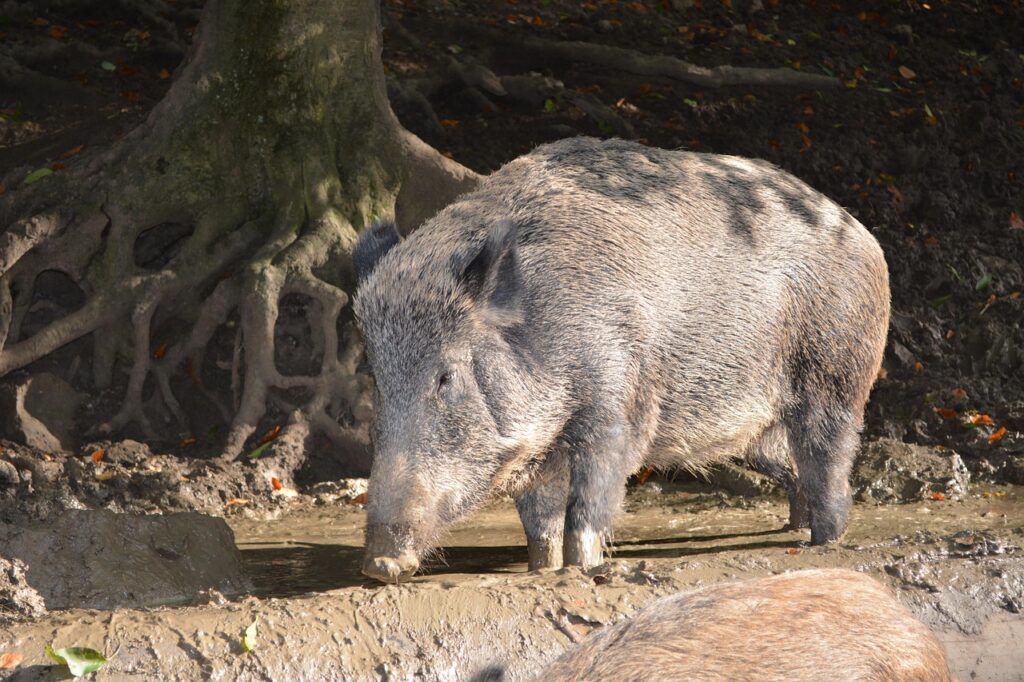
The World of Wild Pigs
Across many regions, pigs live beyond farms in the form of wild pigs, wild hogs, wild boars, and even the feral pig populations found in the United States.
These animals have adapted to harsh environments and often travel long distances in search of food and water. Because of their strength and adaptability, wild pigs have become both admired and feared.
Interestingly, the spread of feral pigs traces back to explorers such as Spanish explorer Hernando de Soto, who introduced pigs to new territories.
Over time, these populations grew uncontrollably, impacting ecosystems across different places, including northern Africa and New York.
Physical Defense and Adaptability
- Wild pigs often develop sharp tusks that serve as weapons.
- Their ability to cover great distances makes them difficult to control.
- They have a good sense of direction, allowing them to navigate forests and plains with ease.
Therefore, the story of wild pigs is also a reminder of how domestication and human introduction can shape entire landscapes.
Fun and Interesting Facts About Pigs
Pigs and Their Playful Nature
One of the most interesting facts about pigs is their ability to play. Studies show they enjoy toys, puzzles, and even video games, where they move cursors on screens using their snouts. Moreover, their excellent memory enables them to recall solutions to problems long after the first attempt.
Unusual Records and Surprising Facts
- The largest litter of piglets recorded reached over 30, showing how prolific pigs can be.
- The pig known as Big Bill still holds the record for the largest pig, weighing more than two tons.
- Some mini pigs have become popular as pets, although they require significant care and living space.
- The world’s heaviest pig demonstrated how selective breeding can produce extreme results.
Consequently, these fun facts reveal pigs as not only useful animals but also record-breakers in the natural world.
Pigs and Human Culture
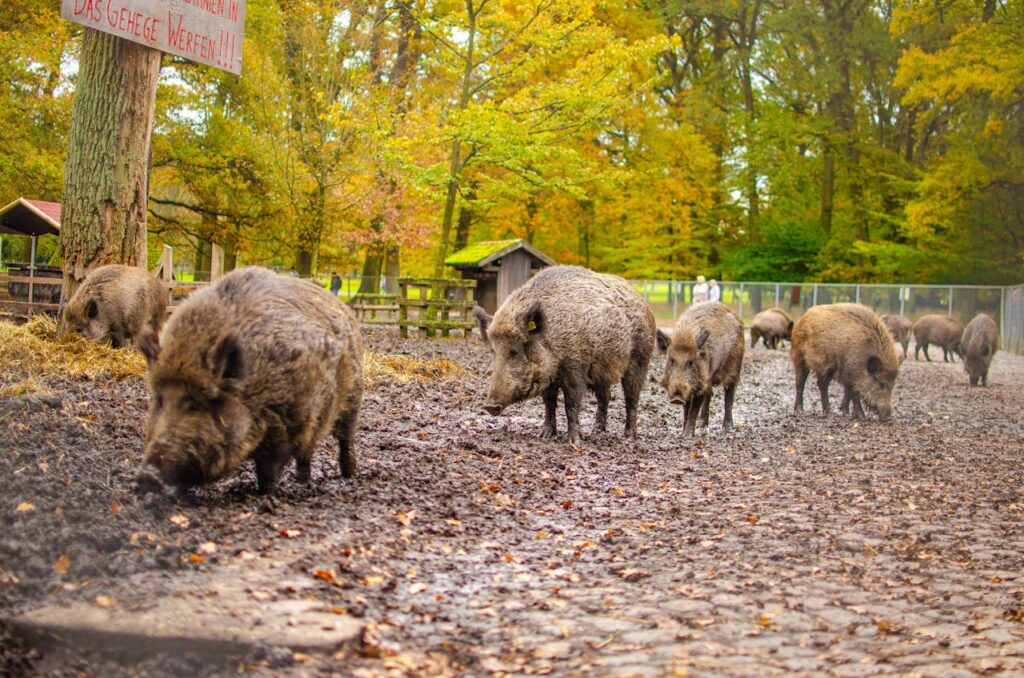
Symbolism and Spiritual Importance
In many cultures, pigs carry symbolic meaning. As noted earlier, in the Chinese zodiac, they represent prosperity and luck. Meanwhile, in European folklore, pigs were once considered valuable products, signifying wealth in farming communities.
Historical Role in Exploration
When Christopher Columbus and others brought pigs to the New World, they quickly became vital to settlers.
Later, pigs spread across the continent, influencing diets and farming practices. Even today, pork remains a major part of food traditions in the United States and beyond.
Therefore, the presence of pigs in human history cannot be overstated. Their adaptability ensured survival for explorers, while their symbolism continues to influence celebrations and cultural practices.
Health and Science Snippet
Snippet-Friendly Fact: Pigs are considered highly intelligent animals, with studies published in the International Journal of Comparative Psychology confirming their ability to play video games, recognize own names, and remember tasks for a long time.
Anatomy and Sensory Abilities of Pigs
The Pig’s Sense of Smell and Hearing
Among the most impressive facts about pigs is their excellent sense of smell. Because of the tip of the snout containing sensitive nerves and a large round disk of cartilage, pigs can detect scents buried deep underground. Consequently, they are used in certain regions to locate truffles, a valuable delicacy.
Furthermore, pigs rely on their hearing. With ears positioned on the sides of their head, they detect sounds from different places.
Their distinct grunts and ability to interpret a mother’s voice demonstrate just how socially and biologically advanced their auditory system is.
Eyesight and Limitations
Although pigs have many strengths, they also face weaknesses. Their poor eyesight prevents them from seeing clearly at long ranges. Nevertheless, their good sense of direction and ability to travel long distances prove that other senses easily compensate.
Pig’s Skin and Flexibility
Because pigs lack strong sweat glands, their pig’s skin has adapted for temperature control. By rolling in mud, they lower body temperature and shield themselves from sun damage.
Their extra flexibility enables them to navigate tight areas, which is especially useful for wild boars living in forests.
I’d really appreciate it if you could read this article Facts About Veterinarians when you have a moment. It’s related to what we’ve been discussing.
Pigs in Medical Research and Human Benefits

Pig Tissue and Human Medicine
A fascinating area of science is the use of pigs in human health. Pig tissue has been applied in surgeries to repair damage in people, while stem cells derived from pigs show promise for future treatments.
Importantly, their organs share similarities with the human heart, making them prime candidates for transplantation research.
Pig Heart Valves and Life-Saving Surgeries
For decades, pig heart valves have been transplanted into patients with defective valves. Because these natural replacements function well in humans, thousands of lives have been extended through this medical advancement.
Human Diseases and Studies
Research into human diseases often uses pigs due to their comparable physiology. From testing treatments to studying development, pigs play an important role in medical progress.
In fact, their genetic makeup and organ size provide scientists with models that are far more accurate than those of smaller animals.
Social Animals With Complex Communication
Distinct Sounds and Emotions
Because pigs are social animals, their communication methods are sophisticated. They use distinct grunts and a pig’s squeal to express different situations such as hunger, alarm, or contentment. Research has even identified more than 20 different vocalizations in pigs.
Bonds With Mothers and Herds
- Mother pigs display nurturing behavior by producing mother’s milk that nourishes newborn piglets.
- Piglets quickly learn to recognize their mother’s voice within the first week of life.
- Adult pigs maintain close bonds with herd members, showing loyalty and emotional awareness.
Therefore, pigs are not only emotional creatures but also sensitive animals capable of building strong communities when given the right living space.
Surprising Pig Facts That Break Stereotypes
- Pigs have more taste buds than humans, making them selective eaters.
- Pigs can also swim
- They can run long distances, disproving the myth of laziness.
- Some pigs even respond to their own names, much like dogs.
- Despite stereotypes, they are among the smartest animals, capable of learning tricks and commands.
Thus, these surprising facts challenge outdated views and encourage respect for pigs as peaceful animals.

Modern Pig Welfare and Ethical Concerns
Factory Farms vs. Free-Range Systems
In modern agriculture, pigs are often raised in factory farms where lack of space leads to stress and health issues.
Because pigs are sensitive animals, confinement can prevent them from expressing natural behaviors such as rooting and exploring. Procedures like tail docking are common to reduce injury from overcrowding.
However, alternative farming systems now emphasize enough space, outdoor areas, and humane treatment.
Free-range and pasture-raised pigs thrive as peaceful animals, showcasing their playful and social traits.
Consequently, consumers have become more aware of the best way to support animal welfare by choosing products from ethical farms.
The Role of Pigs in Sustainability
- Pigs help reduce food waste by consuming scraps.
- They contribute valuable products beyond meat, including leather and pharmaceuticals.
- Their adaptability makes them useful in various environments, from the New World to northern Africa.
Therefore, pigs continue to play an important role not only in food systems but also in environmental sustainability.
National Pig Day and Cultural Recognition
Celebrating National Pig Day
Every year on March 1, National Pig Day honors pigs for their contributions to society. This celebration acknowledges both domesticated pigs and wild hogs, encouraging people to view them as more than sources of pork.
Schools, farms, and animal sanctuaries often use this day to educate the public about the intelligence and emotional depth of pigs.
Pigs in Popular Culture
From children’s stories to animated films, pigs often appear as charming characters. While sometimes portrayed as lazy or messy, modern depictions increasingly highlight their intelligence and social animals nature. As more people learn about the true facts about pigs, cultural attitudes continue to shift.
Facts About Pigs: Frequently Asked Questions (FAQs)
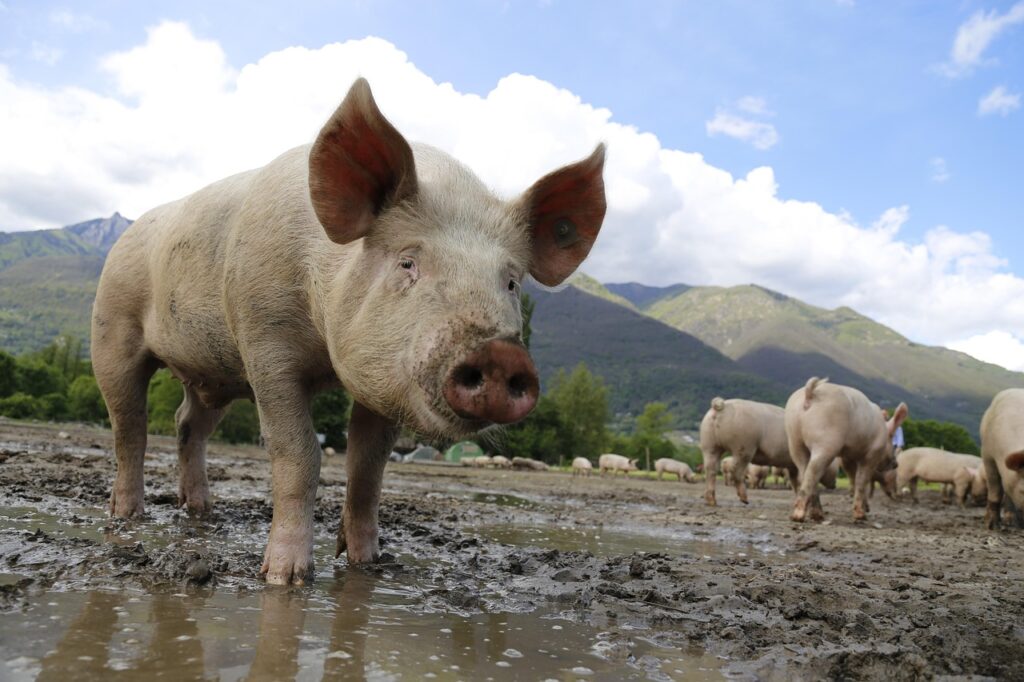
Are pigs really clean animals?
Yes, pigs are naturally clean when given enough space. They avoid soiling their sleeping areas and only roll in mud to regulate body temperature.
How intelligent are pigs compared to other animals?
Pigs are among the most intelligent animals, capable of playing video games, recognizing their own names, and remembering solutions for a long time.
Do pigs recognize their mother’s voice?
Yes, newborn piglets can identify their mother’s voice within their first week, strengthening family bonds.
What is the largest pig ever recorded?
The largest pig, Big Bill, weighed over 2,500 pounds, making him the world’s heaviest pig.
Do pigs play an important role in medicine?
Yes, pigs provide pig heart valves, pig tissue, and even stem cells used in treatments for human diseases.
Are pigs part of history and exploration?
Yes, pigs were introduced to the New World by Christopher Columbus and Hernando de Soto, spreading across the United States and beyond.
Facts About Pigs Conclusion
In summary, the many facts about pigs reveal them as far more than just farm animals. They are smart animals, emotional creatures, and clean animals with rich histories tied to human culture.
From their role in medicine to their symbolism in the Chinese zodiac, pigs continue to hold an important role in society.
Although stereotypes once painted pigs as dirty animals, modern research confirms their intelligence, empathy, and cleanliness.
With their ability to form close bonds, recognize mother’s voices, and navigate long distances, pigs stand as one of the smartest animals we share our world with.
Therefore, whether celebrated on National Pig Day, studied for medical advances, or simply admired for their playful spirit, pigs deserve recognition and respect.
Next read my 83 Interesting Facts About Hippos: (The Best Guide)
By spreading awareness and compassion, people can ensure these remarkable creatures are valued not just for the pounds of bacon they provide but for their intelligence, emotional depth, and lasting contributions to humanity.




